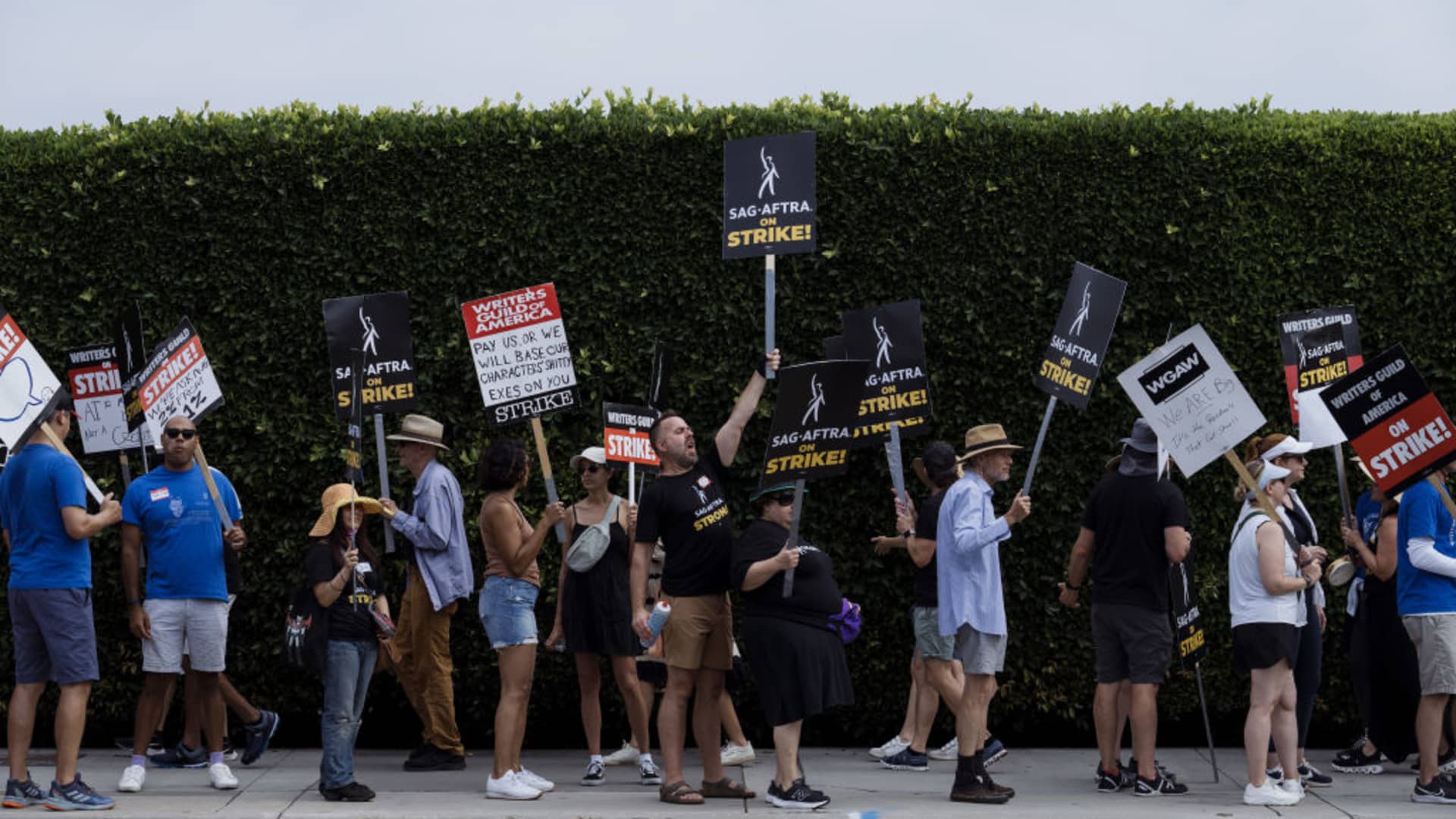Main Topic: Entertainment industry workers on strike for higher compensation and safeguards against artificial intelligence.
Key Points:
1. Entertainment industry workers are seeking higher base compensation and stricter safeguards against artificial intelligence.
2. The strike has caused financial hardship for many workers, with some losing their side jobs and dipping into savings.
3. Despite the financial toll, workers remain firm in their resolve to keep fighting for better conditions and believe the strike is a necessary sacrifice for long-term benefits.
Workers across industries are taking a hard stance against companies for better pay and working conditions, leading to a surge in strikes and support for organized labor, with more than 320,000 workers participating in at least 230 strikes so far in 2023, according to data from Cornell University School of Industrial and Labor Relations.
Labor Day marks the end of summer and highlights the recent wave of strikes and labor actions occurring across various industries as workers demand better pay and working conditions amidst challenges like AI and climate change.
US unions have experienced a surge in strikes over the past year, with major victories and defeats, as workers leverage low unemployment and a favorable public opinion toward unions to demand better pay, benefits, and working conditions.
Summary:
The U.S. workforce on Labor Day 2023 is characterized by low unemployment rates, increasing labor market participation by women, low unemployment rates among all tracked races and ethnicities, the rising influence of artificial intelligence in the workplace, declining union membership, an increase in workers going on strike, and the prevalence of remote work arrangements.
Workers in the United States are increasingly engaging in strikes and labor unrest, with 16 major strikes occurring in the country so far this year, the highest number since 2005, posing potential challenges for American businesses both domestically and abroad, as demonstrated by the threat of a strike at Chevron's plants in Australia.
Approximately 146,000 U.S. auto workers are poised to go on strike if General Motors, Ford, and Stellantis fail to meet their demands for substantial pay raises and restored benefits, potentially causing significant disruptions in auto production and impacting the U.S. economy.
A potential strike by the United Auto Workers could have wide-ranging economic impacts, including higher car prices and job losses at suppliers, with a prolonged strike even potentially pushing the economy toward a recession.
Nearly 64,000 Kaiser Permanente health care workers in California, Oregon, and Washington have authorized a strike if no new contract is reached by the end of September, making it potentially the largest ever health care worker strike in the US.
More than 12,000 workers at the Big Three automakers are on strike in Michigan, Ohio, and Missouri due to inadequate wages and benefits, demanding higher pay and an end to the tiered employment system.
The growing number of strikes in the United States reflects a generational change in the labor movement that is driven by stagnant wages for lower and middle-income workers, rising income inequality, and a strong labor market, providing workers with more leverage in negotiations.
The auto workers' strike, although currently limited in its impact, could have significant growth implications if it expands and persists, potentially causing a 1.7 percentage point quarterly hit to GDP and complicating policymaking for the Federal Reserve.
Tens of thousands of Kaiser Permanente employees in California and other states are planning to go on strike in October due to concerns about pay, staffing, and patient safety, marking what could be the largest strike by healthcare workers in U.S. history.
The United States is expected to add 170,000 jobs in September, which would mark the fourth consecutive month with an increase below 200,000, potentially exacerbating the labor shortage and making it difficult for the Fed to control inflation. The unemployment rate is forecast to fall slightly to 3.7%, while wage growth is expected to rise 0.3%. The impact of labor-union strikes, such as the expanded strike by auto workers, could also affect employment growth.
The ongoing strikes in the U.S., including those in the entertainment industry and by the United Auto Workers, are causing significant economic losses and have raised concerns about a potential recession, with estimates suggesting damages of up to $10 billion and fears of reduced productivity, spending, and hiring.
As worker strikes increase in 2023, some states like New York and New Jersey are offering unemployment benefits to strikers, while other states are considering similar policies.
Labor strikes are increasing as union contracts are expiring, with the main point of contention being higher wages.
Short-duration strikes are becoming more common in the US labor landscape, with 196 strikes lasting a week or less so far this year, up 86% from the same period in 2021, as they are seen as an effective tactical tool by labor unions to achieve their bargaining goals while minimizing lost wages for strikers.
